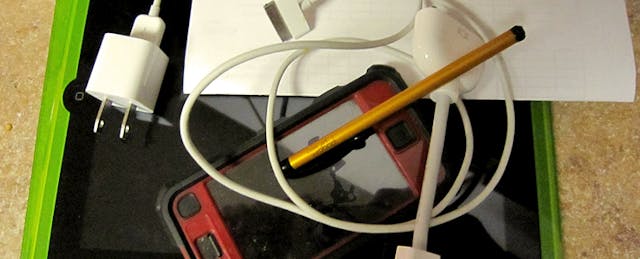As blended learning implementation managers, we feel the same anxiety as a sprinter on the starting block. We know that once upright with our legs under us, we will have the opportunity to realize an accelerated learning experience, greater efficiency, and teacher and student empowerment. At the same time, we are acutely aware that the stumble of a defunct login credential--or worse, Internet outage--can sap enough teacher buy-in from our blended programs to kill their momentum. As with any new system, a strong start is critical to every blended program’s success. Here are some of the common stumbling blocks and how to avoid them.
Content Provider and App Setup Provisioning: Even if your rosters aren’t finalized, create your teachers’ and students’ online content accounts at least a week before school starts. Keep in mind that different programs have different timelines and processes for provisioning. Users & Passwords: All student logins should be standardized so that students only have one login credential. Make sure you understand username and password requirements for each program before you determine a standardized format. The Nitty Gritty: Some small, but significant tripping points when provisioning accounts:1) Many programs eliminate the entire letter of any accented letters in students’ names.2) If any of your passwords lead with a zero, Excel’s default formatting will automatically delete them.3) Many programs automatically add a number to the end of usernames. Under-Promise and Over-Deliver: Because so much is dependent on external forces, don’t make promises you’re not 100% sure you can keep.Nothing will divest your staff more quickly than empty promises. Hardware Setup Computer Setup: Well before school begins, carefully consider requirements for all programs. If using Deep Freeze, be sure everyone working on the blended implementation is aware of the settings, and establish a solid protocol for when and how changes to student computers settings will be made. Browser Compatibility: As programs and browsers update, you can suddenly have a browser compatibility issue. Install multiple browsers at the beginning of the year so you always have a functional alternative. Other Software Updates: Avoid interrupted class time by making sure you turn off automatic updates on each of your computers. Teacher Onboarding Application and Content Provider Onboarding: Do not make teachers sit through expensive 8-hour trainings that are devoid of context. We’ve used software like Camtasia and Jing to create screencasts, and organize these videos on a Google site that explains how a limited number of features in a program are applied to specific use cases. Thanks to our friends at Rocketship, we’ve begun using Zaption to imbed checks for understanding in these screencasts. Student Rollout: During professional development sessions, explicitly model with teachers how to roll these programs out step-by-step with students. Make sure teachers know what students will see when they login and the common errors students make. Student Onboarding Logging On: Mail merge students’ usernames and passwords on to a card they can easily reference. Have a staff member very explicitly teach students how to login, making it clear that if one character is off, it won’t work. Students may not know that “at” is a symbol or that there are never spaces in a username or password. Troubleshooting: Teach your students a troubleshooting protocol. We require that students first consult the list of “common problems” on a bookmarked Google Site, ask a friend, or ask a “Tech-xpert” (a student trained to troubleshoot) before finally raising the red flag Velcro-ed to their computer to ask their teacher. Team Work Make Friends with the IT Team: Most implementers are tech-savvy teachers, not IT professionals. Buy your IT guy a sandwich and outline your division of labor: determine how technical issues will be relayed to them and the timeline for resolving them. Clearly Communicate your Division of Labor: If you can solve one technical problem, there’s a good chance that many will believe you can solve every technical problem. Make sure that everyone knows who to contact when they encounter different issues. Otherwise, you’ll find yourself trying to solve problems that you can’t solve and that others will be frustrated you can’t solve. Computer Maintenance and Repair: Teachers won’t have time to track these issues, but students will. We train our students to complete a “Computer Care Log” on Google Forms each time they login to monitor the health of the hardware. When an issue arises, our tech team follows-up.
Above all, be open and honest. While we believe in and have seen the power and promise of blended learning, it is critical to communicate to teachers that there will be hurdles beyond the starting blocks: the Internet will go down, computers will need repair, and at times they will feel frustrated. Find a space for a regular open discussion of challenges and solutions so that you continually empower your teachers to innovate and move ever closer to the next great blended classroom.
Additional contributors to this article:

Will Eden is the Entrepreneur-in-Residence at Alpha Public Schools. Previously, he served as a blended learning consultant at Education Elements and taught high school English.

Jin-Soo Huh is the Director of Technology at KIPP Chicago. Previously, he taught high school and middle school math.


